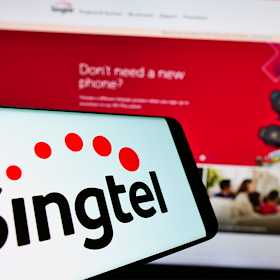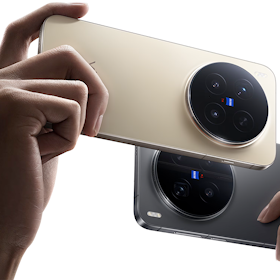How do I compare mobile plans?
When comparing mobile plans, these are the key factors you should consider.
If you want a new phone
Do you want a new phone, or are you happy with a SIM-only mobile plan? If you're looking to buy a phone on a plan, you're largely limited to Singtel, StarHub, and M1.
However, if you're happy with your current phone or intend to buy a new one outright, you can pick from a much wider range of providers. Smaller providers are powered by the same networks as The Big Three, but often have cheaper plans and better value deals.
Prepaid or postpaid
If you're opting for a SIM-only mobile plan, you'll need to decide whether you want a postpaid plan or prepaid plan. These days, there's very little difference other than when you pay your bill.
On postpaid mobile plans, you'll get a bill at the end of each month and typically have two weeks to pay it.
On prepaid mobile plans, you'll pay upfront ahead of your month.
Prepaid plans tend to be harder to rack up excess charges on, which can make them better for kids. Just note that some prepaid plans need to be recharged every 28 days instead of 30 days or each calendar month, which means you'll be charged 13 times per year.
Data allowance
You'll want to work out how much data you're currently using each month as a starting point for finding a new phone plan. While there's a host of supersized plans available with over 100GB per month now, there's no point in paying for more data than you're using.
Roaming inclusions
If you're a regular international traveller, you'll want to ensure your plan has international roaming inclusions that meet your needs. This is especially important if you want to use your local number when you're overseas.
IDD calls
If you're regularly calling family or friends overseas, consider choosing a plan with IDD minutes bundled with the plan to avoid pricey pay-as-you-go rates.
How much data do I need for my phone plan?
According to the IMDA, Singaporeans used 95.96 petabytes per month (or 95,690,000GB) in Q4 of 2024 alone. That translates to about 9.6GB on average per mobile plan, but because so many Singaporeans have more than one mobile plan, it's actually closer to something like 16.1GB per person per month.
As such, most of us would get by fine with a 20GB postpaid mobile plan. It's always good to have a buffer to avoid paying excess usage fees.
At the same time, you'll want to consider your own needs. If you barely use mobile data, you can get away with a smaller phone plan. If you're constantly streaming or mobile gaming on the go, you might want a more generous allowance.
The important thing is to only pay for the data you're using. There's no point getting a 100GB phone plan if you only use 10GB each month. When working out your own data needs, consider these questions:
- How much data have you used on previous bills?
- Will your data usage needs change in the future?
- Can you use Wi-Fi instead?
Make sure you look at the apps you frequently use and factor in how much data they burn through. Here's a handy table to help break down data usage across a range of popular applications:
| 3GB | 10GB | 15GB | At least 20GB | |
|---|---|---|---|---|
| Web Surfing | ||||
| Skype | ||||
| Music Streaming | ||||
| Online Gaming | ||||
| YouTube | ||||
| Streaming TV | ||||
| Downloading Movies & TV | ||||
| Downloading Video Games |
Which mobile network should I choose?
Singapore has four mobile networks. No matter which provider you choose, you will still be connected to the Singtel, StarHub, M1 or SIMBA network. Let's break down the pros and cons of each.
Singtel

Singtel is Singapore's largest telco, and according to third-party testing by OpenSignal, one of the best.
- Best coverage
- Best 5G download speed
- Best network reliability
- More expensive than competitors
Providers who use the Singtel network
- CMLink
- GOMO
- VIVIFI
- WhizComms
- Zero1
- ZYM Mobile
StarHub

StarHub is Singtel's closest competitor, winning multiple OpenSignal categories including video experience, download speed experience, and more.
- More affordable than Singtel
- Great coverage
- Best download speed experience
- Still more expensive than competitors
Providers who use the StarHub network
- eight
- giga
- redONE
M1

Though not quite on the same level as Singtel and StarHub, M1 is still an excellent choice with three OpenSignal awards and lower prices.
- More affordable than Singtel and StarHub
- Best 5G availability
-
Data Passport allows for local data to be used overseas
- Not as many OpenSignal awards as Singtel and StarHub
Providers which use the M1 network
- Changi Mobile
- Circles.Life
- Maxx
- MyRepublic
SIMBA

The newest entrant into the Singapore market, SIMBA has only won one OpenSignal award. However, when it comes to price, this newbie is well out in front.
-
- Excellent value plans
- Data usable in neighbouring countries
- Unlimited national calls
- Only one OpenSignal award
How do I switch mobile plans?
Switching mobile providers is easier than you might think. Most mobile plans are contract-free, and moving your number to your new service is pain-free and can happen within minutes of you activating your new SIM card.
Can I keep my number if I change mobile providers?
Yes, you can keep your existing phone number when changing your provider.
All you have to do is sign up for a new phone plan before cancelling your old one and make sure you specify you want to 'port' or transfer your existing number across.
For more information, check out our guide on keeping your number when you switch providers.
Compare mobile phones
We put most new phones through their paces, testing screen quality, camera performance, battery life, and more. If you're tossing up between different brands for your next smartphone, here's a little info on the big names, and their competitors.

Apple iPhone
The iPhone needs no introduction, having revolutionised the mobile world over the last decade and a bit. iPhones are the go-to for many Singaporeans, with over half the population touting an Apple-made handset. Of course, iPhones are considered a premium product and tend to be one of the most expensive smartphones you can buy. That said, there are also refurbished iPhones available from a variety of retailers.
- Widely available
- Great for photography
- iPhone 16e and refurbished models are a solid cheaper option

Samsung Galaxy
Samsung Galaxy phones are often considered the default choice if you don't want an iPhone. The Galaxy S family goes head-to-head with Apple's high-end devices, but there are also cheaper Samsung handsets available in its A-series. These can be a great choice if you're looking to spend less than $1,000 on a phone. Samsung has also proven to be an innovative force in the industry with foldable devices like the Galaxy Z Flip and Z Fold.
- Fast, sleek and powerful
- Some of the best Android handsets
- Samsung offers great security and support

Google Pixel
Google is perhaps better known for developing Android - the operating system powering many of today's smartphones and tablets - but it also makes its own handsets. Known as the Pixel range, Google's devices have come to be regarded as Android iPhones. Pixel devices are the first to get new features, they're supported for longer than many other Android phones. If you're looking for an affordable phone, Google's A-series Pixels are among the best.
- Unique software features not on other Androids
- More affordable than other flagship handsets
- Google phones can take amazing photos

OPPO
OPPO is a smaller brand but has a strong reputation thanks to its value-driven handset range. Whether you're looking for a $300 phone or a $1,500 phone, OPPO has a device for you. Better yet, you can be guaranteed that no matter how much you're spending, you'll be getting bang for your buck.
- Premium handsets compete well with Apple and Samsung.
- OPPO has some of the best mid-range phones available
- Full support for Android and the Play Store.
FAQ
What is the cheapest way to get a phone plan?
The cheapest phone plans in Singapore are SIM-only plans from smaller providers, and you can pick from prepaid and postpaid options.
The price of a cheap phone plan usually starts at around $7 per month. They tend to include at least 100GB per month, as well as 300 local minutes and 100 SMS.
Cheap mobile phone plans don't typically come with extras and perks, like bonus subscriptions to streaming services or mobile phone discounts. They also tend to have smaller (or nonexistent) roaming data allocations and IDD minutes, but in some cases you can add this on for a small fee.
Here are the cheapest phone plans in our database with at least a 28-day expiry:
Are there any unlimited data phone plans in Singapore?
There are unlimited data phone plans in Singapore, but these all tend to have a catch. You still get a monthly data allowance, but if you go over it, you can continue using your service with slower speeds. Here's a look at some of the unlimited data mobile plans available in Singapore.
Prepaid vs. postpaid: which type of phone plan is best?
Prepaid vs. postpaid: There was a time when the answer to this question was straightforward. Prepaid plans were only for people who weren't going to use their phone a lot; like kids or someone who only kept a phone handy for emergencies. Most people used a postpaid plan.
Nowadays, the line between prepaid and postpaid plans has blurred to a point where the differences are indistinguishable. The essential difference is in the name; prepaid plans require you to pay before you use the service, via a recharge or top-up, while customers using postpaid plans are sent a bill at the end of the month.
No matter which you pick, there are plenty of great value options available.
Is a prepaid plan cheaper than a postpaid SIM-only mobile plan?
Generally speaking, you should be able to find postpaid SIM-only plans for as cheap as prepaid plans. The starting cost for both prepaid and postpaid SIM-only mobile plans tends to start around $7 per month. Plan inclusions are always pretty similar in this price range, too. If you own your phone are need a BYO phone plan, you should compare SIM-only and prepaid plans at the same time.
Just make sure you note the expiry on your prepaid plan. Many prepaid plans have a 28-day expiry, which means you'd make 13 recharges per year. As such, this can make them more expensive than a postpaid plan at the same price point.
Mobile phone plan glossary
Prepaid
Prepaid refers to a mobile plan where you pay for your usage upfront. You then have a set data allowance, and if you go over, you'll be cut off instead of being charged excess fees.
Postpaid
Postpaid refers to a mobile plan where you're sent a monthly bill and then have a set period of time to pay it. Postpaid plans may have excess usage fees.
eSIM
An eSIM is a rewritable SIM card that’s built into a smartphone or smartwatch. An eSIM never leaves your phone. There's no need to pop open a slot or pry off a case to put it in. Instead, you simply download a "software SIM" from your provider of choice. Most high-end phones from recent years support eSIM.
Roaming
Roaming refers to using your Singapore phone plan overseas. Some mobile plans come with roaming data included, while others charge extra for travel packs. Most calls are charged on a pay-as-you-go basis.
MVNO
MVNO is short for Mobile Virtual Network Operator. An MVNO is a mobile provider that doesn't own its mobile network. Instead, it resells access to someone else's network. In Singapore, MVNOs resell access to Singtel, StarHub, or M1.
SIM-only
SIM-only mobile plans are mobile plans that don't come with a new phone. SIM-only plans can be postpaid or prepaid, but the telcos often use SIM-only in reference to postpaid plans.







































.jpeg?w=280&h=280&usm=20&usmrad=0.8&fit=crop)
























